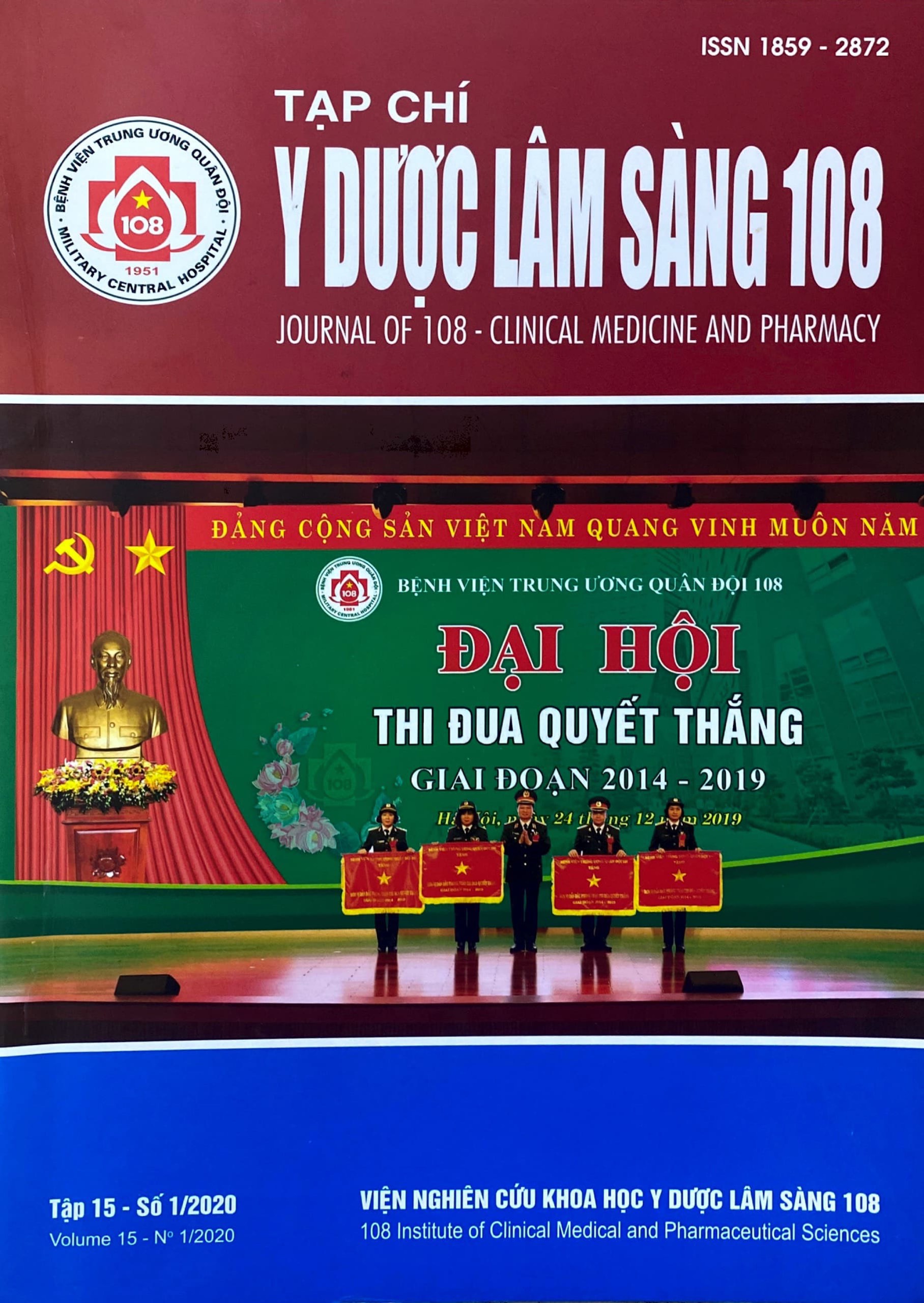Knowledge of stroke risk factors, symptoms and first aid in relatives of acute stroke patients
Main Article Content
Keywords
Abstract
Objective: To examine knowledge of stroke risk factors, symptoms and first aid among relatives of acute stroke patients. Subject and method: 75 patients with acute stroke were enrolled from October 2016 to October 2017. Assessed patient's relatives understanding of risk factors, symptoms, first aid and identified sources of information to patients' relatives. Result: 53 objects (accounting for 70.7%) knew at least 1 risk factor for stroke, most of which were hypertension (30.7%), smoking (22.7%) and alcohol abuse (20%). Knowledge about other risk factors was quite low. Most relatives of stroke patients recognized paralysis (46.7%), difficulty speaking (30.7%) as the signs of stroke. However, up to 32% of relatives did not name any sign of stroke and 25.3% did not recognize the urgency of emergency stroke. The proportion of relatives of stroke patients
who were completely unable to manage when having a stroke patient was still quite high, accounting for 53.3%. Information of stroke was from relatives (76%), television (70.7%), radio (60%), newspapers (53.3%). The dissemination of community knowledge about stroke from medical staff was limited (48%). Nearly 20% of patients' relatives had not received basic knowledge about stroke. Conclusion: The patient's relative awareness about stroke is still poor. Need to provide information about stroke to the community more actively, especially more contributions from medical staff.
Article Details
References
2. Hickey A, O'Hanlon A, McGee H et al (2009) Stroke awareness in the general population: Knowledge of stroke risk factors and warning signs in older adults. BMC Geriatr 9: 35.
3. Kimura K, Iguchi Y, Shibazaki K et al (2010) Early stroke treatment with IV t-PA associated with early recanalization. J Neurol Sci 295(1-2): 53-57.
4. Peter V, Mohamed F, Ashraf E et al (2014) How to predict the affected circulation in large vessel occlusive stroke? EJMINT, 1444000227(30th October 2014).
5. Saengsuwan J, Suangpho P, Tiamkao S (2017) Knowledge of stroke risk factors and warning signs in patients with recurrent stroke or recurrent transient ischaemic attack in Thailand. Neurol Res Int 8215726.
6. Saver JL, Jahan R, Levy EI et al (2012) Solitaire flow restoration device versus the Merci Retriever in patients with acute ischaemic stroke (SWIFT): A randomised, parallel-group, non-inferiority trial. Lancet 380(9849): 1241-1249.
7. Saver JL (2006) Time is brain-quantified. Stroke 37(1): 263-266.
 ISSN: 1859 - 2872
ISSN: 1859 - 2872
